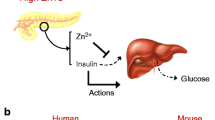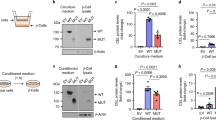Abstract
Imbalance in Ca2+ concentration and dysfunction of the chaperone system are linked with type 2 diabetes mellitus (T2DM). Two-dimensional protein profiling of pancreatic beta cells in T2DM subjects has shown that the Ca2+ binding chaperone, calreticulin (CALR), plays a role in the pathophysiology of this disease. In a case/control study, we performed mutation screening of the promoter region, 9 exons, and exon/intron boundaries of CALR by PCR-SSCP and sequencing in 120 patients with T2DM and 530 controls. Two novel mutations with an estimated frequency of 0.0005 were detected in T2DM patients, which were absent in the control pool (Mid P exact <0.01). The first mutation was a G>T transversion in intron 2 conserved polypurine tract at IVSII-142. The second mutation was a 9-bp deletion in the highly conserved exon 9 encompassing amino acids 397–399. To our knowledge, the current study reports for the first time, that CALR gene mutations that occur with T2DM. Studying larger groups of patients with T2DM for the CALR gene as well as other genes in the chaperone system is warranted to further elucidate the role of low frequency mutations in the causation of this complex disorder.





Similar content being viewed by others
Abbreviations
- CALR:
-
Calreticulin
- ER:
-
Endoplasmic reticulum
- GLUT-1:
-
Glucose transporter 1 (GLUT-1
- HBA1c:
-
Nonenzymatic glycosylated hemoglobin
- SSCP:
-
Single strand conformation polymorphism analysis
- T2DM:
-
Type 2 diabetes mellitus
- UPR:
-
Unfolded protein response
References
Grarup N, Sparso T, Hansen T. Physiologic characterization of type 2 diabetes-related loci. Curr Diab Rep. 2010;10:485–97.
Poulsen P et al. Increased risk of type 2 diabetes in elderly twins. Diabetes. 2009;58:1350–5.
Folli F et al. Altered insulin receptor signalling and beta-cell cycle dynamics in type 2 diabetes mellitus. PLoS One. 2011;6:e28050.
Huang QY, Cheng MR, Ji SL. Linkage and association studies of the susceptibility genes for type 2 diabetes. Yi Chuan Xue Bao. 2006;33:573–89.
Back SH, Kaufman RJ. Endoplasmic reticulum stress and type 2 diabetes. Annu Rev Biochem. 2012;81:767–93.
Basseri S, Austin RC. Endoplasmic reticulum stress and lipid metabolism: mechanisms and therapeutic potential. Biochem Res Int. 2012;2012:841362.
Varadi A, Rutter GA. Dynamic imaging of endoplasmic reticulum Ca2+ concentration in insulin-secreting MIN6 Cells using recombinant targeted cameleons: roles of sarco(endo)plasmic reticulum Ca2+−ATPase (SERCA)-2 and ryanodine receptors. Diabetes. 2002;51 Suppl 1:S190–201.
Boden G et al. Increase in endoplasmic reticulum stress-related proteins and genes in adipose tissue of obese, insulin-resistant individuals. Diabetes. 2008;57:2438–44.
Smith MJ, Koch GL. Multiple zones in the sequence of calreticulin (CRP55, calregulin, HACBP), a major calcium binding ER/SR protein. EMBO J. 1989;8:3581–6.
Nakamura K et al. Functional specialization of calreticulin domains. J Cell Biol. 2001;154:961–72.
Gold LI et al. Calreticulin: non-endoplasmic reticulum functions in physiology and disease. FASEB J. 2010;24:665–83.
Villamil Giraldo AM et al. The structure of calreticulin C-terminal domain is modulated by physiological variations of calcium concentration. J Biol Chem. 2010;285:4544–53.
Michalak M et al. Calreticulin: one protein, one gene, many functions. Biochem J. 1999;344:281–92.
Bazwinsky-Wutschke I et al. Distribution patterns of calcium-binding proteins in pancreatic tissue of non-diabetic as well as type 2 diabetic rats and in rat insulinoma beta-cells (INS-1). Histochem Cell Biol. 2010;134:115–27.
Jalali S et al. Calreticulin regulates insulin receptor expression and its downstream PI3 Kinase/Akt signalling pathway. Biochim Biophys Acta. 2008;1783:2344–51.
Totary-Jain H et al. Calreticulin destabilizes glucose transporter-1 mRNA in vascular endothelial and smooth muscle cells under high-glucose conditions. Circ Res. 2005;97:1001–8.
Ahmed M, Forsberg J, Bergsten P. Protein profiling of human pancreatic islets by two-dimensional gel electrophoresis and mass spectrometry. J Proteome Res. 2005;4:931–40.
Bass J et al. Folding of insulin receptor monomers is facilitated by the molecular chaperones calnexin and calreticulin and impaired by rapid dimerization. J Cell Biol. 1998;141:637–46.
Boden G, Merali S. Measurement of the increase in endoplasmic reticulum stress-related proteins and genes in adipose tissue of obese, insulin-resistant individuals. Methods Enzymol. 2011;489:67–82.
WHO. Definition, diagnosis and classification of diabetes mellitus and its complications. Department of Noncommunicable Disease Surveillance; 1999.
Miller SA, Dykes DD, Polesky HF. A simple salting out procedure for extracting DNA from human nucleated cells. Nucleic Acids Res. 1988;16:1215.
Nabi MO et al. Novel mutations in the calreticulin gene core promoter and coding sequence in schizoaffective disorder. Am J Med Genet B Neuropsychiatr Genet. 2010;153B:706–9.
Gasser RB et al. Single-strand conformation polymorphism (SSCP) for the analysis of genetic variation. Nat Protoc. 2006;1:3121–8.
Desmet FO et al. Human Splicing Finder: an online bioinformatics tool to predict splicing signals. Nucleic Acids Res. 2009;37(9):e67.
Ravier MA et al. Mechanisms of control of the free Ca2+ concentration in the endoplasmic reticulum of mouse pancreatic beta-cells: interplay with cell metabolism and [Ca2+]c and role of SERCA2b and SERCA3. Diabetes. 2011;60:2533–45.
Raghubir R, Nakka VP, Mehta SL. Endoplasmic reticulum stress in brain damage. Methods Enzymol. 2011;489:259–75.
Hoshino T et al. Endoplasmic reticulum chaperones inhibit the production of amyloid-beta peptides. Biochem J. 2007;402:581–9.
Shao L et al. Mood stabilizing drug lithium increases expression of endoplasmic reticulum stress proteins in primary cultured rat cerebral cortical cells. Life Sci. 2006;78:1317–23.
Garcia-Blanco MA, Baraniak AP, Lasda EL. Alternative splicing in disease and therapy. Nat Biotechnol. 2004;22:535–46.
Yokoyama M, Hirata K. New function of calreticulin: calreticulin-dependent mRNA destabilization. Circ Res. 2005;97:961–3.
Sundar Rajan S et al. Endoplasmic reticulum (ER) stress & diabetes. Indian J Med Res. 2007;125:411–24.
Imamura M, Maeda S. Genetics of type 2 diabetes: the GWAS era and future perspectives [Review]. Endocr J. 2011;58:723–39.
Pound LD et al. The pancreatic islet beta-cell-enriched transcription factor Pdx-1 regulates Slc30a8 gene transcription through an intronic enhancer. Biochem J. 2011;433:95–105.
Al-Harbi EM et al. Genotypes and allele frequencies of angiotensin-converting enzyme (ACE) insertion/deletion polymorphism among Bahraini population with type 2 diabetes mellitus and related diseases. Mol Cell Biochem. 2012;362:219–23.
Sinorita H et al. ACE gene insertion/deletion polymorphism among patients with type 2 diabetes, and its relationship with metabolic syndrome at Sardjito Hospital Yogyakarta, Indonesia. Acta Med Indones. 2010;42:12–6.
Sirand-Pugnet P et al. An intronic (A/U)GGG repeat enhances the splicing of an alternative intron of the chicken beta-tropomyosin pre-mRNA. Nucleic Acids Res. 1995;23:3501–7.
Martinez-Contreras R et al. Intronic binding sites for hnRNP A/B and hnRNP F/H proteins stimulate pre-mRNA splicing. PLoS Biol. 2006;4:e21.
Majewski J, Ott J. Distribution and characterization of regulatory elements in the human genome. Genome Res. 2002;12:1827–36.
Coppolino MG, Dedhar S. Calreticulin. Int J Biochem Cell Biol. 1998;30:553–8.
Frickel EM et al. TROSY-NMR reveals interaction between ERp57 and the tip of the calreticulin P-domain. Proc Natl Acad Sci U S A. 2002;99:1954–9.
Corbett EF et al. Ca2+ regulation of interactions between endoplasmic reticulum chaperones. J Biol Chem. 1999;274:6203–11.
Aghajani A, Rahimi A, Fadai F, Ebrahimi A, Najmabadi H, Ohadi M. A point mutation at the calreticulin gene core promoter conserved sequence in a case of schizophrenia. Am J Med Genet B Neuropsychiatr Genet. 2006;141B:294–5.
Farokhashtiani T et al. Reversion of the human calreticulin gene promoter to the ancestral type as a result of a novel psychosis-associated mutation. Prog Neuro-Psychopharmacol Biol Psychiatry. 2011;35:541–4.
Ohadi M et al. Novel evidence of the involvement of calreticulin in major psychiatric disorders. Prog Neuro-Psychopharmacol Biol Psychiatry. 2012;37:276–81.
Esmaeilzadeh-Gharehdaghi E et al. Support for down-tuning of the calreticulin gene in the process of human evolution. Prog Neuro-Psychopharmacol Biol Psychiatry. 2011;35:1770–3.
Alkelai A et al. Association of the type 2 diabetes mellitus susceptibility gene, TCF7L2, with schizophrenia in an Arab-Israeli family sample. PLoS One. 2012;7:e29228.
Hansen T et al. At-risk variant in TCF7L2 for type II diabetes increases risk of schizophrenia. Biol Psychiatry. 2011;70:59–63.
Altar CA et al. Insulin, IGF-1, and muscarinic agonists modulate schizophrenia-associated genes in human neuroblastoma cells. Biol Psychiatry. 2008;64:1077–87.
Bodmer W, Bonilla C. Common and rare variants in multifactorial susceptibility to common diseases. Nat Genet. 2008;40:695–701.
Acknowledgments
We wish to thank Staff of the BoAli clinical laboratory in Zanjan and Dr Faranak Sharifi for providing us with the clinical samples and Dr Javad Naserian was involved in statistical analysis. We would like to thanks Dr Amir Hosein Taromchi was involved in molecular genetics analysis and study design.
Conflicts of interest
The authors declare that they have no conflicts of interest.
Authors’ contributions
SM was involved in study design, carried out molecular genetics and statistical analysis, compiled the data, wrote the Ms.
MR and KP were involved in data analysis.
MO was the principal geneticist and coordinator of the project, involved in conceptualization of the project, study design, oversee complete genetic analysis in laboratory, critical inputs and finalization of the manuscript.
Author information
Authors and Affiliations
Corresponding author
Rights and permissions
About this article
Cite this article
Mahmazi, S., Parivar, K., Rahnema, M. et al. Calreticulin novel mutations in type 2 diabetes mellitus. Int J Diabetes Dev Ctries 33, 219–225 (2013). https://doi.org/10.1007/s13410-013-0152-0
Received:
Accepted:
Published:
Issue Date:
DOI: https://doi.org/10.1007/s13410-013-0152-0




